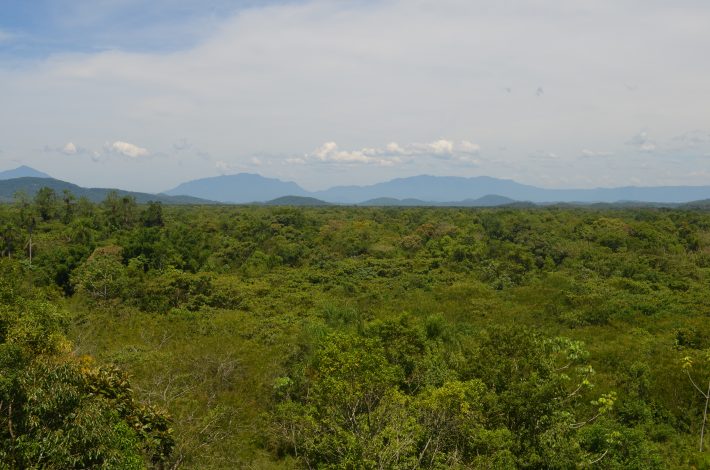Press release provided by the authors of the study.
When managing degraded tropical landscapes to achieve global biodiversity and ecosystem services targets, it is necessary to not only restore new forests but conserve natural remnants of old forests as well finds a new study published in the Journal of Applied Ecology.

Researchers at the Federal University of Paraná (UFPR) and the Society for Wildlife Research and Environmental Education (SPVS) came together to evaluate ecological restoration as a strategy to reverse environmental anthropogenic disturbance. The researchers evaluated a pioneering restoration program promoted by the SPVS since 2000, combining conservation and restoration efforts, in one of the most important remaining Atlantic Forest regions in Brazil.
The area involves the municipalities of Antonina and Guaraqueçaba, a well-preserved region on the southern coast of Paraná of 300 thousand hectares, with forests, estuaries, bays, and islands. The researchers collected samples and analyzed environmental characteristics and images from 65 restoration areas over 20 years.
Seeking to understand the interaction between restoration and conservation efforts, the researchers verified the differences between natural and active restoration strategies. "The first is much cheaper and depends on natural processes to promote the arrival of species. The second, which is planting seedlings, is much more expensive for those restoring them", explains Marcia Marques, a researcher at the Federal University of Paraná.
To restore is also to conserve. Restoration needs to be allied to conservation
The study shows that, with the presence of conserved areas, natural regeneration becomes a more economical alternative to obtain satisfactory results: "If you want to use only natural regeneration in this situation, it is possible, because there is a flow of seeds through the fauna", reports Marques.
According to the authors, restoration cannot be planned without being aligned with conservation strategies and, therefore, it is necessary to strengthen actions which can inhibit the process of ecosystem degradation.
To recover the biodiversity and ecosystem benefits of depleted tropical forests, it is not enough to simply restore them. Investment in the conservation of existing forests is crucial to ensuring the success of new restoration. Old forests contain trees from long-lived species far past their traditional harvest age, they are typically highly biodiverse due to centuries of growth and capable of storing vast amounts of carbon. However, the amount and proximity of old forests in relation to restoration areas affect species richness, biodiversity and the ability to capture carbon from the atmosphere.
We need to maintain mature forests, with all their functionalities.
With concerns over the degradation of tropical areas by human activities, efforts till now have focused on restoration, including the United Nations Decade of Ecosystem Restoration (2021-2030). There are great expectations of improving people's livelihoods, combating climate change, and halting the collapse of biodiversity through the restoration of deforested areas.
The author claims restoration is often overestimated: "In general in society, there is a very high expectation for ecological restoration, including the ability to absorb all the carbon that we have been throwing into the atmosphere for centuries when it's just not that good".
For Marques, there is a perception that deforestation can easily be offset by restoration, which is seen as a 'silver bullet' when this is not the case.
"It is not a case of assuming that we can deforest and then restore. We also need to maintain mature forests, with all their functionalities. To restore is also to conserve. Restoration needs to be allied to conservation".
You can read the full research article here:
https://besjournals.onlinelibrary.wiley.com/doi/epdf/10.1111/1365-2664.14240






